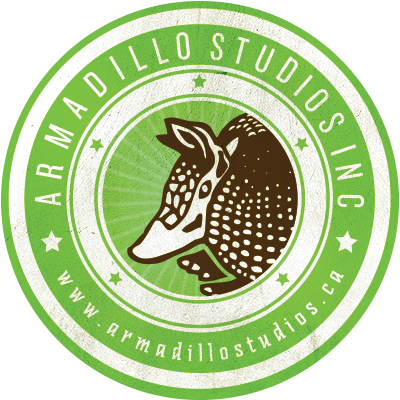Shopping For a Web Site? Part 3
October1, 2008
Welcome to the final installment of our “Shopping for a Web Site? Series”:http://blog.armadillostudios.ca/article/shopping-for-a-web-site-part-1.
This week, we’re finally getting down to the quantitative issues of Web Site building. We’re going to be talking about potential time lines for building Web Sites and also ‘other’ costs associated with building a Web Site.
So let’s get started.
5. How Long Does it take to Build a Web Site? I Need Mine Up Tomorrow!
Again, we’re going to be very vague with our answer, but on average it’s going to take a few weeks or a couple of months to go live with a web site.
We understand your outrage at the moment, but hear us out.
The reason the process takes so long is two fold.
First, _web design_ is a complex art. Building a web site is never as simple as _I need five pages and I want it to be green_. The smallest error or set of changes can take hours of troubleshooting to resolve. The layout design process alone takes hours. There are dozens of aspects that need to be considered with every design decision. Far more than you’ll probably expect. Things like font size, the color of links, and compatibility with older browsers.
Secondly, a good designer will include their client’s opinions and suggestions into the design process. This whole process of feedback, drafts, alterations and meetings unfortunately takes time. Not that it is anyone’s fault; setting up meetings, writing content, making revisions are all time consuming activities.
We suggest that when you start the process of looking to build a web site keep these two items in mind. It will greatly help with the process and also allow for a good working relationship with your web designer.
Just understand that the entire process takes time and that being prepared before hand will speed things up.
*Armadillo Tip*: _Some companies will have a RFP (Request For Proposal) that will provide you with an idea of the information and questions that your web designer will need to get started. It’s a good idea to use this tool before your first meeting._
_If you want to get an idea of what a designer may ask you feel free to “download and use our RFP”:http://blog.armadillostudios.ca/file_download/7. It will provide a basic understanding of the types of questions a web designer/studio is going to ask you._
.
6. What Other Costs Should I Plan For?
There are four major costs associated with a building a web site.
1) Web Domain Registration. _$10-15 per year per address_
2) Web Hosting _$100-$250 a year for basic packages_
3) Web Site Development and Design _See our first tip in “part 1”:http://blog.armadillostudios.ca/article/shopping-for-a-web-site-part-1 for more info_
4) Stock images, extra fonts and potentially copywriting services.
Now, some studios and some designers include registration and hosting in their initial set-up fees. While smaller ones, like Armadillo Studios, do not.
The reason for this is that Web Hosting is a completely different animal that straight Web Design. So, many smaller companies will stay away from this venture. Web Hosting involves far more technical, security and database support than most companies are willing to take on.
In our experience we highly recommend two companies for all your hosting and domain registration needs:
1) “Domainsatcost.ca”:http://www.domainsatcost.ca for Canadian and General Domain registration.
2) “Dreamhost.com”:http://www.dreamhost.com/rewards.cgi?conturner for all Web Site hosting. (Plus Dreamhost includes “free customized Gmail support”:)
You might also need to be aware of the potential cost of *Stock Photography*, *Custom Fonts* or even the services of a *Copywriter*.
Now, we understand that these are costs which most people won’t even think about, but they are critical to the entire process. If you want to make your web site standout above your competition, you will need to use all the tools at your disposable. That includes the best fonts and the best images.
A perfect font or a perfect photo that encompasses the vibrancy of your business will push your web site into a different stratosphere. Unfortunately, most designers will only have a limited collection of fonts and photos at their disposal. So they might have to add an additional cost for purchasing a font for your web site. In addition, that perfect photo might have to come from a stock photography company (i.e. Veer.com or Istockphotos.com) while these costs are some what unexpected, using these images will cost far less than hiring a professional photographer to capture that exact same image.
The final cost that might appear during the process is the services of a Copywriter.
Copywriters are professional writers that provide custom content for your site. While we all would love to believe we can eloquently write our own content, sometimes your content is better left for the professionals. In those instances a Copywriter is the best solution.
*Armadillo Tip*: _Copywriters are a good investment._
_Hiring a Copywriter will save you valuable man hours and it will give you that extra bit of professionalism. In our experience, for every page of text a client needs, they will probably spend 5-6 hours writing and editing. On the other hand a Copywriter will be able to churn out the same (if not better) content in a quarter of the time. While the cost might be a little more than you expect, the stress and time savings are far greater._
… And with that we conclude our three part *Shopping For a Web Site Series*. We hope you’ve enjoyed our tips. If you have further questions feel free to contact us. We would love to hear some feedback and even ideas for future articles.
Contact us at info@armadillostudios.ca if you have any questions.
Cheers,
The Armadillo Team.
